Chromosomes and Meiosis
- Chromosomes are not visible in the cell’s nucleus—not even under a microscope—when the cell is not dividing.
- The DNA becomes more tightly packed during cell division and is then visible under a light microscope.
- A chromatid is 1 of the 2 identical strands of DNA that make up a chromosome.
- 2 chromatids are joined by a centromere.
- This structure is counted as 1 chromosome & 2 chromatids.
- When separated they are 2 chromosomes & 2 chromatids.

- 2 chromatids are joined by a centromere.
- Chromosomes types:
- Autosomes:
- found in both males and females carrying traits.
- In humans there are 22 pairs of autosomes.
- Autosomes that are the same size & structure “genes, not sequence” are called: Homologous.
- found in both males and females carrying traits.
- Autosomes:
-
- Sex chromosomes:
- In most organisms there is only 1 pair of sex chromosomes.
- These carry traits & determines the organism’s gender.
- The X and Y are not homologous where X is larger than Y and contains more genes.
- Mammals and human females are XX while mammals and human males are XY.
- But…. that is not always the case:
- Sex chromosomes:
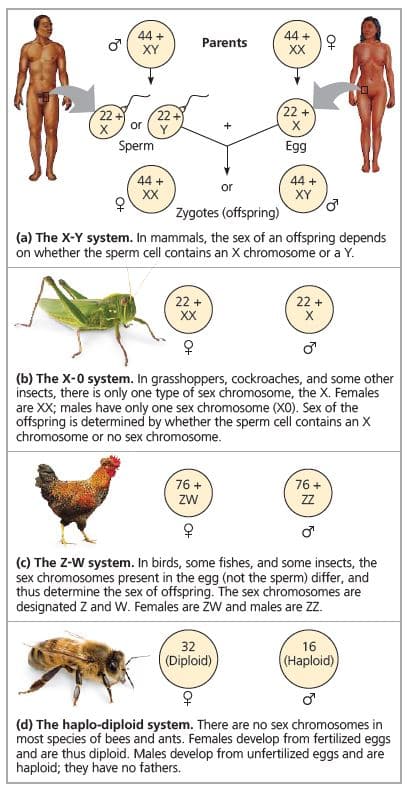
- To study the chromosomes in any organism we use a photo called Karyotype:
- To study the number of chromosomes.
- To study the size of the chromosomes.

- Remember: Haploid cells vs. Diploid cells.
- Cell Division: The process by which a cell divides into two new daughter cells.
- Types of cell division:
- Sexual Reproduction: when the offspring inherit some of the genetic information from the parent cell.
- Asexual Reproduction: when the offspring inherit all of the genetic information identically from the parent cell.
- Types of cell division:
- Remember “Cycle of Life”:
- Meiosis: “Produce gametes” Reduce Chromosomes numbers.
- Fertilization: “Produce the zygote” Restores Chromosomes numbers.
- Mitosis: “Growth” Maintains Chromosomes numbers.
- Meiosis:
- Homologous Chromosomes:
- have 2 copies of each gene (one on each).
- Can be similar alleles or different.
- Homozygous “similar alleles” or heterozygous “different” alleles.

- Crossing over:
- Synapsis: is the pairing of homologous chromosomes in prophase I of meiosis.
- Homologues exchange parts by crossing over or recombination
- Events in meiosis contribute to genetic diversity.
- Mutations cause most of the differences in genes.
- If an offspring inherits a combination of genes that gives it a survival advantage.
- it has higher chances to survive and pass on its genes.
- So the possibilities are so high for this combination to be passed on.
- As a result, there is an accumulation of favorable characteristics.
- During meiosis and fertilization these chromosomes will be shuffled, producing offspring with their own unique set of traits.
- In Metaphase I the orientation of homologous chromosomes “Independently assorted” contributes to genetic variability.
- In each daughter cell of meiosis I there is 50:50 chance to getting maternal or paternal chromosome of a certain homologous pair.
- The number of combinations possible when chromosomes assort independently into gametes is 2n, where n is the haploid number of the organism.
- For humans with n = 23, there are 223, or more than 8 million possible combinations of chromosomes.
- Crossing over produces recombinant chromosomes, which combine genes inherited from each parent.
- Random fertilization adds to the genetic variation arising from meiosis.
- Any sperm can fuse with any egg.
- The ovum is one of more than 8 million possible chromosome combinations.
- The successful sperm is one of more than 8 million possibilities.
- The resulting zygote could contain any one of more than 70 trillion possible combinations of chromosomes.

Alterations of chromosome number cause some genetic disorders.
- Abnormal separation of the chromosomes into daughter cells is called nondisjunction and it happens when problems occur with the meiotic spindle.
- Usually in meiosis I.
- If one pair fails to separate: the result is:
- Half the gametes (n+1) and the other half (n-1).
- If one pair fails to separate: the result is:
- Also, sister chromatids may fail to separate during meiosis II.
- If one pair fails to separate: the result is:
- Half the gametes are normal (n) while a quarter of gametes (n+1) and the other quarter (n-1).
- As a result of nondisjunction, one gamete receives two of the same type of chromosome, and another gamete receives no copy.
- This might result in an offspring with abnormal number of chromosomes (More or Less).
- Trisomy … or trisomic cells have three copies of a particular chromosome type and have (2n + 1) total chromosomes.
- Monosomy … or monosomic cells have only one copy of a particular chromosome type and have (2n – 1) chromosomes.
- If one pair fails to separate: the result is:
- If this happens early in development, because of an error in the mitotic spindle, the aneuploid condition will be passed along by mitosis to a large number of cells.
- This is likely to have a substantial effect on the organism.
- If the organism survives, aneuploidy typically leads to a distinct phenotype.
- Although the frequency of aneuploid zygotes may be quite high in humans, most of these alterations are so disastrous to development that the embryos are spontaneously aborted long before birth.
- Usually in meiosis I.
- Chromosome deletions can also cause severe disorders.
-
- One syndrome, cri du chat, results from a specific deletion in chromosome 5.
-
- Chromosomal translocations between non-homologous chromosomes are also associated with human disorders.
NOTES:
- Sexual reproduction requires that diploid organisms produce haploid cells that can fuse during fertilization to form diploid offspring.
- DNA replication occurs prior to meiosis and mitosis during the S phase of the cell cycle.
- Meiosis is a series of events that arrange and separate chromosomes and chromatids into daughter cells.
- During the interphases of meiosis, each chromosome is duplicated. “The amount not the chromosome number.”
- In meiosis, there are two rounds of nuclear division resulting in four nuclei and usually four daughter cells, each with half the number of chromosomes as the parent cell.
- The first separates homologs.
- The second—like mitosis—separates chromatids into individual chromosomes.
- During meiosis, variation in the daughter nuclei is introduced because of crossover in prophase I and random alignment of tetrads at metaphase I.
- The cells that are produced by meiosis are genetically unique.
- Meiosis and mitosis share similarities, but have distinct outcomes.
- Mitotic divisions are single nuclear divisions that produce daughter nuclei that are genetically identical and have the same number of chromosome sets as the original cell.
- Meiotic divisions include two nuclear divisions that produce four daughter nuclei that are genetically different and have one chromosome set instead of the two sets of chromosomes in the parent cell.
- The main differences between the processes occur in the first division of meiosis, in which homologous chromosomes are paired and exchange non-sister chromatid segments.
- The homologous chromosomes separate into different nuclei during meiosis I, causing a reduction of ploidy (Chromosome set) level in the first division.
- The second division of meiosis is more similar to a mitotic division, except that the daughter cells do not contain identical genomes because of crossover.
Chromosome Mapping
**********************************
Practice Questions:
1.
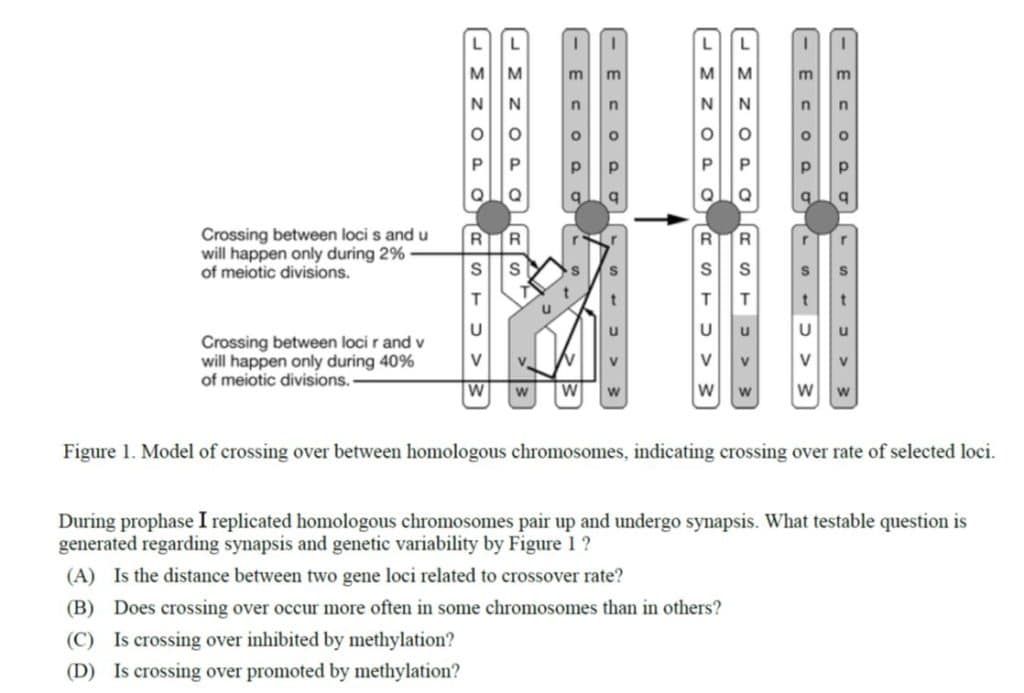
2.

3.

4.
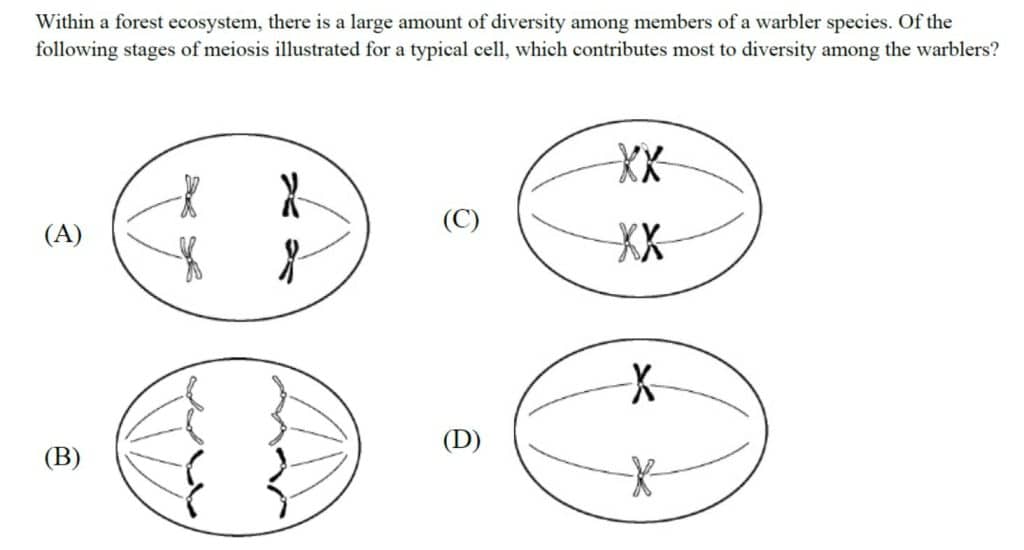
5.

6.
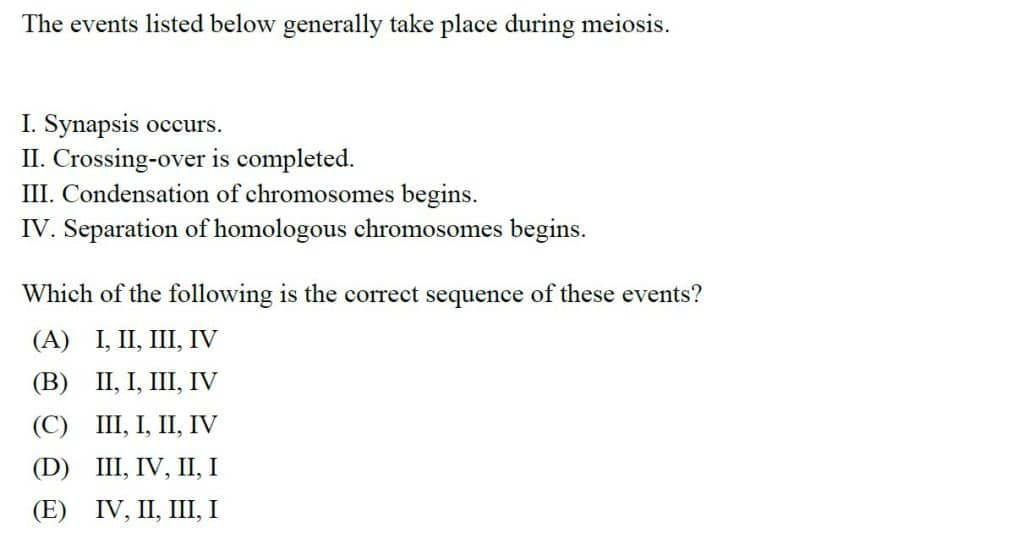
7.

8.
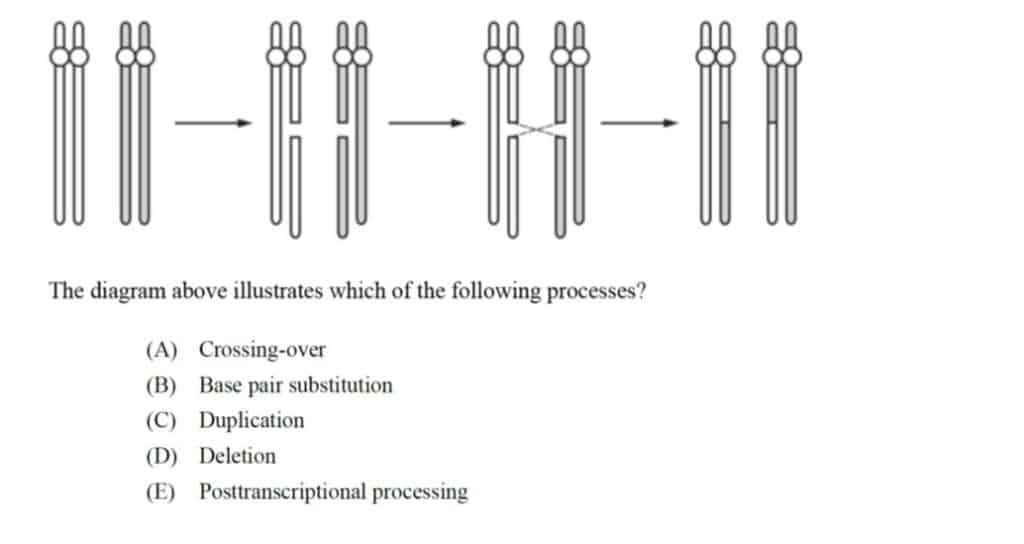
9.
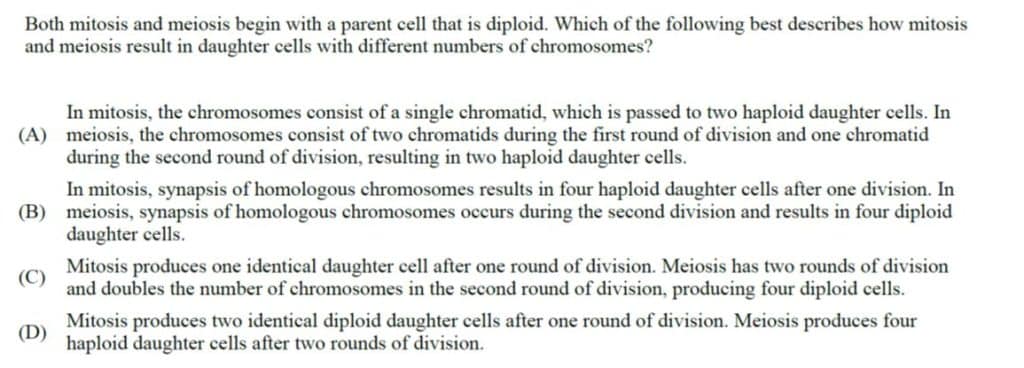
10.
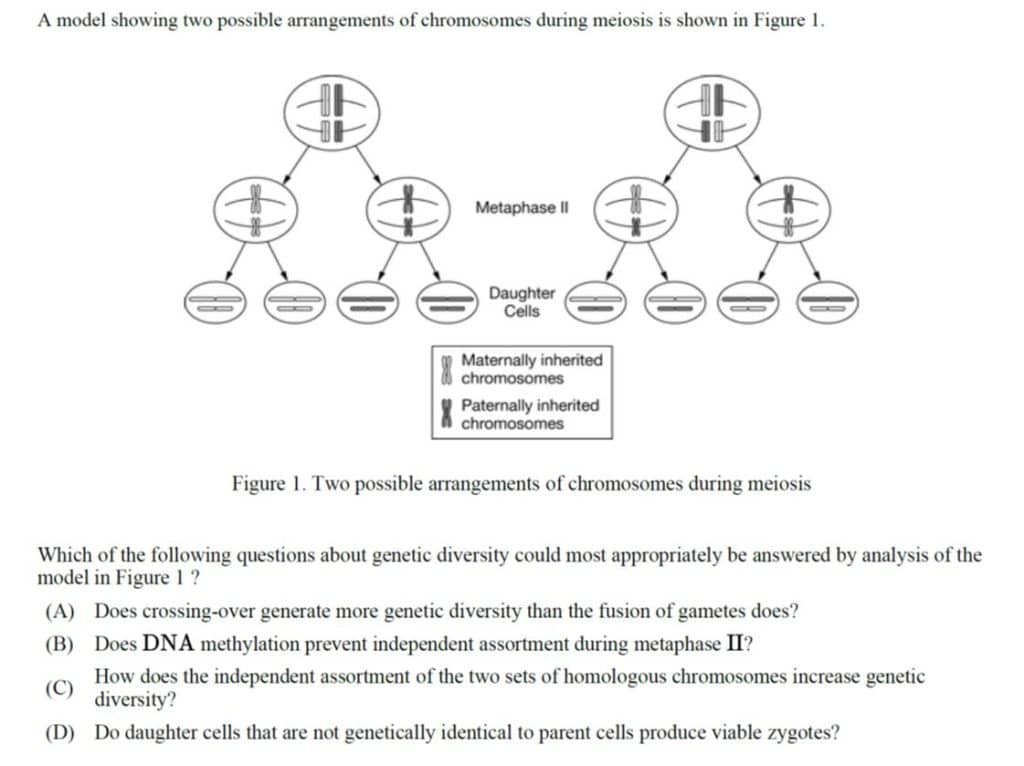
Answers:
1. A, 2. B, 3. E, 4. C, 5. B, 6. C, 7. C, 8. A, 9. D, 10. C.
Homework Questions:
1.

Answers:
2.
Answers:
3. 
Answers:









 \
\